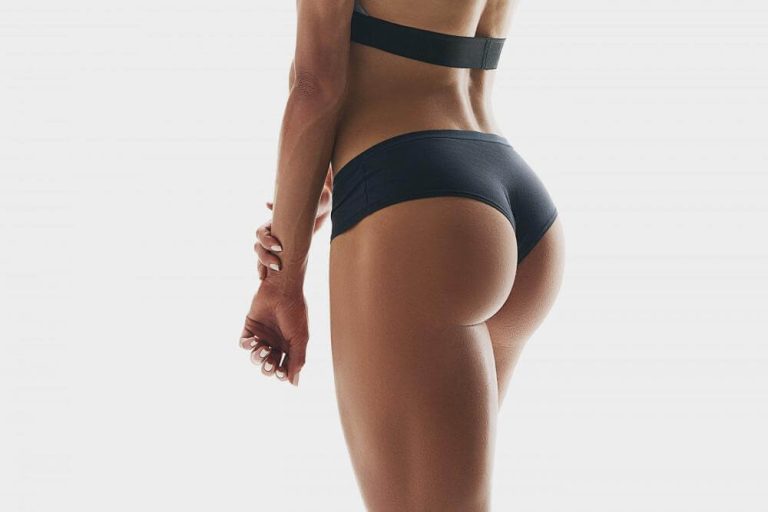Beyond Skin Deep: The Psychological Impact of Facial Sculpting Fillers
Posted on: April 13, 2024
Over 70% of people seeking cosmetic enhancements consider facial sculpting filler as their top choice, highlighting its booming popularity in the beauty industry. This surge isn’t just about vanity; it’s about embracing a method that offers subtle yet impactful changes, boosting confidence without the need for invasive surgery. Facial sculpting fillers, known for their ability to contour and define facial features, have revolutionized the approach to anti-aging and aesthetic improvement. With advancements in technique and product formulation, achieving a natural-looking enhancement has never been more accessible. Whether you’re aiming to accentuate your cheekbones, smooth out lines, or refine your jawline, understanding how facial sculpting fillers work can be your first step towards a refreshed and rejuvenated appearance.
Key Takeaways
- Injectable dermal fillers offer a non-surgical option for enhancing facial appearance, specifically by adding volume and contour to the face.
- Understanding the types of filler ingredients is crucial in selecting the right product that aligns with your aesthetic goals and minimizes risks.
- A pre-treatment consultation is essential for a personalized treatment plan and to discuss any potential side effects or concerns.
- The treatment process is relatively quick and results are immediate, but discussing the expected duration and persistence of filler results with your provider is important for setting realistic expectations.
- Jawline fillers can significantly enhance the definition and shape of the jaw, contributing to a more balanced and aesthetically pleasing facial appearance.
- Being aware of potential side effects and having open communication with your healthcare provider can help manage expectations and ensure a safer treatment experience.
Understanding Injectable Dermal Fillers
Filler Basics
Injectable dermal fillers are substances used in cosmetic procedures. They aim to restore lost volume and smooth wrinkles. Made from various materials, their primary use is enhancing facial contours.
Doctors inject them beneath the skin. This process adds fullness to areas that have thinned due to aging. Common treatment areas include lips, cheeks, and jawline.
FDA Approval
Safety is paramount with these cosmetic treatments. Many fillers have received FDA approval. This means they’ve undergone rigorous testing for safety and effectiveness.
Hyaluronic acid fillers are among the most popular. They are naturally found in the skin, making them a safe choice for many people.
Calcium hydroxylapatite and poly-L-lactic acid fillers also have FDA’s nod. Each type serves different purposes, from smoothing fine lines to rebuilding facial volume.
Professional Selection
Choosing a qualified professional is crucial for filler injections. It ensures both safety and the desired outcomes.
Qualified professionals understand facial anatomy deeply. They know where to inject fillers for natural-looking results. They also minimize risks like infection or incorrect placement.
Patients should seek providers with proven experience and credentials in cosmetic procedures. This reduces complications and enhances satisfaction with the results.
Enhancing Appearance with Fillers
Facial Symmetry
Fillers offer a unique approach to enhancing facial symmetry. They restore lost volume and smooth out wrinkles effectively. This process not only improves the overall facial structure but also targets specific areas like lips and cheeks for a more defined look.
By injecting fillers, cosmetic surgeons can tailor treatments to meet individual needs. They focus on balancing facial proportions, which is crucial for achieving a harmonious appearance. The result is a more aesthetically pleasing face that reflects symmetry and balance.
Youthful Look
One of the most sought-after benefits of fillers is their ability to provide a youthful appearance almost immediately. They work by filling in fine lines and wrinkles, leading to skin tightening and rejuvenation. This effect contributes significantly to looking younger without the need for surgical interventions.
Moreover, fillers stimulate natural collagen production. This process aids in maintaining long-term improvements in skin texture and firmness. Patients often notice enhanced facial contours and a reduction in signs of aging such as a double chin or sagging skin.
Psychological Benefits
The impact of fillers extends beyond physical enhancements. They play a significant role in boosting confidence and satisfaction with one’s appearance. Seeing immediate visual improvements helps individuals feel more positive about their looks.
This boost in self-esteem can influence various aspects of life, from personal relationships to professional opportunities. Many report feeling more comfortable in social situations and confident in presenting themselves to the world.
Types of Filler Ingredients
Hyaluronic Acid
Hyaluronic acid fillers are the most common. They hydrate and plump the skin effectively. These fillers are ideal for lips and cheeks. Their effects last from six months to a year.
Patients appreciate their natural look. They also like that these fillers dissolve over time.
Calcium Hydroxylapatite
This ingredient is found in bones. It’s heavier than hyaluronic acid. Thus, it’s perfect for deeper lines and volume loss. Its results can last up to 18 months.
Doctors often recommend it for the jawline and cheeks. It provides a subtle lift and definition.
Poly-L-lactic Acid
This synthetic material stimulates collagen production. It’s not just a filler but a collagen booster too. Results appear gradually but are more long-lasting, often up to two years.
It works well for deep wrinkles and volume enhancement. Many choose it for its longevity and natural-looking outcomes.
Polymethylmethacrylate (PMMA)
PMMA is a semi-permanent option. It combines microspheres with collagen, offering support to the skin’s structure. Its effects can last several years.
Ideal for deep wrinkles and scars, PMMA requires careful consideration due to its permanence.
Temporary vs Semi-Permanent
Temporary fillers like hyaluronic acid are safer for beginners. They allow adjustments over time. Semi-permanent options offer longer-lasting results but with less flexibility.
Choosing between them depends on one’s goals and commitment level.
Collagen Stimulators
Fillers that stimulate collagen provide durable results by enhancing natural processes. Unlike direct fillers, they improve skin quality over time.
They’re ideal for those seeking gradual improvements without frequent touch-ups.
By highlighting the unique properties of each filler type, individuals can make informed decisions tailored to their aesthetic goals. Whether seeking immediate plumpness or long-term rejuvenation, there’s a filler product suited for every need and preference. Understanding the differences between temporary and semi-permanent options further aids in selecting the right path towards achieving desired facial contours with minimal risks involved. Collagen-stimulating fillers stand out as an excellent choice for those aiming at not just immediate corrections but also long-term benefits through enhanced natural collagen production, providing an avenue towards more permanent enhancements without constant interventions.
Selecting the Right Filler for You
Individual Needs
Every face tells a unique story. Understanding this, individualized treatment plans are crucial in facial sculpting. Not all fillers work the same for everyone. Your specific aesthetic goals and facial anatomy dictate the type of filler you need.
Professionals consider several factors to recommend the right option. These include your skin’s elasticity, areas of volume loss, and overall facial structure. They aim to enhance your natural beauty while maintaining balance and symmetry.
Professional Consultation
Seeking expert advice is a step you can’t skip. A professional consultation helps determine the most suitable filler type for you. Experts take into account your skin type, age, and desired effect during this process.
They will discuss various filler options available that align with your needs. This conversation ensures you’re well-informed about what each filler can do for you. It also sets realistic expectations about the results.
Realistic Expectations
Understanding the limitations of fillers is as important as selecting the right one. Fillers can do wonders in enhancing facial features and restoring volume. However, they have their limits.
It’s essential to have realistic expectations about what fillers can achieve. They offer temporary improvements and require maintenance over time. Knowing this helps manage expectations and satisfaction with the outcomes.
Pre-treatment Consultation Insights
Facial Evaluation
During the initial consultation, expect a thorough evaluation of your facial structure. This step is vital for crafting a personalized treatment plan that aligns with your aesthetic goals.
The provider will examine your skin’s elasticity, volume, and overall facial symmetry. They’ll discuss how fillers can enhance certain areas and what you can realistically expect. Understanding the nuances of your facial anatomy allows for tailored treatments that complement your natural features.
Medical History
It’s crucial to disclose your complete medical history and any medications you’re currently taking. This information helps assess if facial sculpting fillers are suitable for you.
Certain conditions or medications can affect how your body responds to the treatment. For instance, blood thinners might increase bruising risks. Being open about your health ensures the safest possible care.
Desired Outcomes
Discussing what you hope to achieve with filler treatments is a key part of the consultation. Whether it’s restoring volume or enhancing contours, clear communication helps set realistic expectations.
Your provider will explain how different fillers can produce various effects, building on the selection process discussed previously. This conversation ensures both you and your surgeon are aligned on the desired results.
Procedure Details
Gaining insight into the procedure itself is essential for making an informed decision. Ask about the techniques used, how long the treatment takes, and any necessary aftercare.
Providers should outline what to expect during and after the procedure, including any potential side effects or downtime. Knowing these details ahead of time prepares you for a smooth recovery process.
Risks and Recovery
Understanding the potential risks and recovery timeline is paramount. While fillers are generally safe, being aware of possible complications allows for prompt action if needed.
Your surgeon or registered nurse will advise on how to minimize risks and ensure a quick recovery. They’ll also tell you how long before full results become apparent, which can vary from days to weeks depending on the type of filler used.
The Injectable Filler Treatment Process
Initial Cleansing
Before the actual procedure begins, the skin is thoroughly cleansed. This step is crucial to prevent infections and ensure a safe treatment.
Health professionals use antiseptic solutions to clean the targeted area. They might also apply a topical numbing cream. This ensures the patient feels minimal discomfort during the injection process.
Numbing Cream
To enhance comfort, numbing creams or local anesthesia are often used. Patients typically feel little to no pain because of this preparation.
The application of these products takes about 20 to 30 minutes to take effect. During this time, patients can relax as they prepare for the next step.
Injection Technique
Injectable fillers are carefully administered using fine needles or cannulas. The technique varies depending on the filler type and treatment area.
Practitioners might use fat injections or synthetic injectables like hyaluronic acid. They inject precisely, sculpting the facial features with accuracy. Sometimes, radiofrequency devices accompany fillers to enhance results.
Post-Treatment Care
After injection, immediate care involves ice application to reduce swelling and bruising. Patients receive detailed instructions on how to care for their skin.
They should avoid strenuous activities for at least 24 hours. Also, direct sunlight exposure should be minimal in the days following treatment.

Recovery Time
Recovery varies among patients but is generally quick thanks to minimally invasive techniques. Most return to their daily routines within a day or two.
However, full effects and healing might take up to two weeks to manifest fully. During this period, patients notice gradual improvements in their facial contours.
Duration and Persistence of Filler Results
Filler Longevity
The lifespan of facial sculpting fillers can vary significantly. Some last for months, while others can maintain their effect for years. The type of filler plays a crucial role in determining how long the results will last.
Hyaluronic acid fillers are popular for their natural-looking results. Yet, they often require maintenance after six to eighteen months. On the other hand, synthetic fillers offer longer-lasting outcomes. They can keep your skin looking plump and youthful for up to two years or more.
Influencing Factors
Several factors influence the persistence of filler effects. Your body’s metabolism rate is a key player. People with higher metabolic rates may find their filler results fading quicker.
Lifestyle choices also have an impact. Regular exposure to sunlight and smoking can shorten the lifespan of fillers. The amount of product used during treatment matters too. Generally, larger volumes lead to more enduring results.
Maintenance Treatments
To sustain the desired aesthetic, follow-up treatments are often necessary. They help in keeping the volume and smoothness consistent over time.
Most clients opt for touch-ups once they notice the effects diminishing. This approach allows for adjustments based on current facial structure changes and personal preferences.
Benefits of Jawline Filler
Enhanced Definition
Jawline filler adds sharpness to the jawline. It creates a more defined look. This is crucial for those feeling their face lacks contours.
Fillers work by adding volume where it’s needed. They make the jaw appear more prominent. This can significantly enhance one’s facial profile.
Balanced Proportions
Facial symmetry plays a big role in attractiveness. Jawline fillers help achieve this balance. They do so by adjusting the lower face’s proportions.
This adjustment makes other facial features look more harmonious. It can correct imbalances without surgery. Many find their confidence boosted after this treatment.
Youthful Appearance
Aging often leads to sagging skin and volume loss around the jaw. Fillers counteract these signs of aging. They provide a lifted, youthful look without invasive procedures.
The added volume reduces the appearance of jowls and sagging skin. It subtly lifts the lower face. This results in a fresher, more rejuvenated appearance.
Nonsurgical Advantage
One major benefit of jawline filler is its nonsurgical nature. It offers a way to sculpt the jawline without the risks of surgery.
Recovery time is minimal with fillers. Most people return to their daily activities immediately. This makes it an attractive option for those seeking quick, noticeable improvements.
Potential Side Effects to Consider
Common Reactions
Swelling, bruising, and redness are often the body’s normal response to facial sculpting filler injections. These side effects usually resolve within a few days. They indicate that the body is adjusting to the new substance.
Applying ice can reduce swelling and discomfort. It’s important to follow your practitioner’s advice for aftercare to ensure these reactions subside quickly.
Serious Complications
Though rare, serious complications from facial fillers can occur. Allergic reactions, infections, and filler migration represent some of the more severe risks. These issues underscore the importance of choosing an experienced professional for your treatment.
If you experience unusual symptoms such as persistent pain, swelling that doesn’t decrease, or signs of infection like fever, seek medical attention immediately. These could signal complications requiring prompt treatment.
Aftercare Importance
Following aftercare instructions carefully plays a crucial role in minimizing risks associated with facial fillers. Avoiding strenuous exercise and excessive heat for 24-48 hours post-treatment helps reduce swelling and bruising.
Staying hydrated and avoiding alcohol can also aid in a smoother recovery process. Your provider will give specific guidelines tailored to your situation.
Cost Consideration
While not a side effect per se, the cost of facial sculpting fillers is an essential factor to consider. Prices vary widely depending on the type of filler used and the volume required to achieve desired results.
It’s vital to discuss all costs upfront with your provider to avoid any surprises. Remember, investing in a skilled professional may mean higher expenses but also reduces the risk of complications.
Closing Thoughts
Facial sculpting fillers offer a transformative approach to enhancing your appearance, providing a tailored solution that aligns with your unique facial structure and aesthetic goals. From understanding the basics of injectable dermal fillers to navigating the nuances of selecting the right filler for you, it’s clear that this treatment can significantly impact your self-confidence and overall satisfaction with your appearance. Remember, the key to a successful outcome lies in choosing an experienced professional for your pre-treatment consultation and treatment process, ensuring safety and achieving desired results.
With the potential for long-lasting effects and the ability to address various concerns, now might be the perfect time to explore how facial sculpting fillers can benefit you. Don’t let uncertainty hold you back. Reach out to a qualified professional today and take the first step towards a more confident, radiant you. Your journey to enhanced beauty and self-assurance is just an appointment away.
Frequently Asked Questions
What are injectable dermal fillers?
Injectable dermal fillers are substances used to enhance facial contours, smooth lines, and restore volume loss in the face, providing a more youthful appearance.
How do fillers enhance appearance?
Fillers add volume and definition to facial features, smoothing wrinkles and enhancing contours like the jawline for a rejuvenated look.
What types of filler ingredients are there?
Common filler ingredients include hyaluronic acid, calcium hydroxylapatite, poly-L-lactic acid, and polymethylmethacrylate beads, each serving different purposes in facial sculpting.
How do I select the right filler for me?
Selecting the right filler involves considering your aesthetic goals, discussing options with a qualified professional, and understanding the characteristics of different fillers.
What should I expect during a pre-treatment consultation?
Expect to discuss your aesthetic goals, medical history, and potential risks. This ensures the treatment plan is tailored specifically to you.
Can you describe the injectable filler treatment process?
The process involves cleansing the area, applying numbing cream if necessary, injecting the chosen filler with precision, and then assessing results for any immediate touch-ups.
How long do filler results last?
Filler results vary by type but generally last from 6 months to 2 years before gradually being absorbed by the body.
What are the benefits of jawline filler?
Jawline filler enhances definition, creates a more sculpted look, and can balance facial proportions without invasive surgery.
What potential side effects should I consider with fillers?
Common side effects include swelling, bruising at injection sites, and temporary redness. Rare complications can occur but are minimized when treated by experienced professionals.





